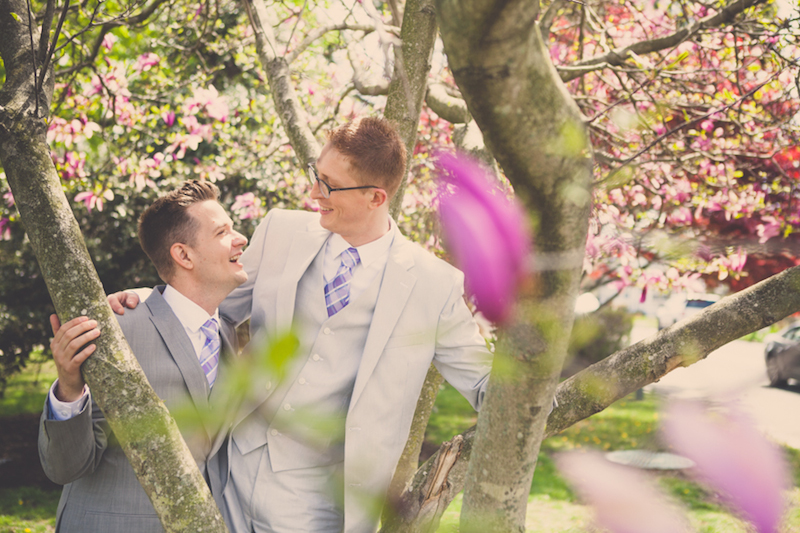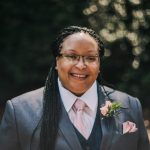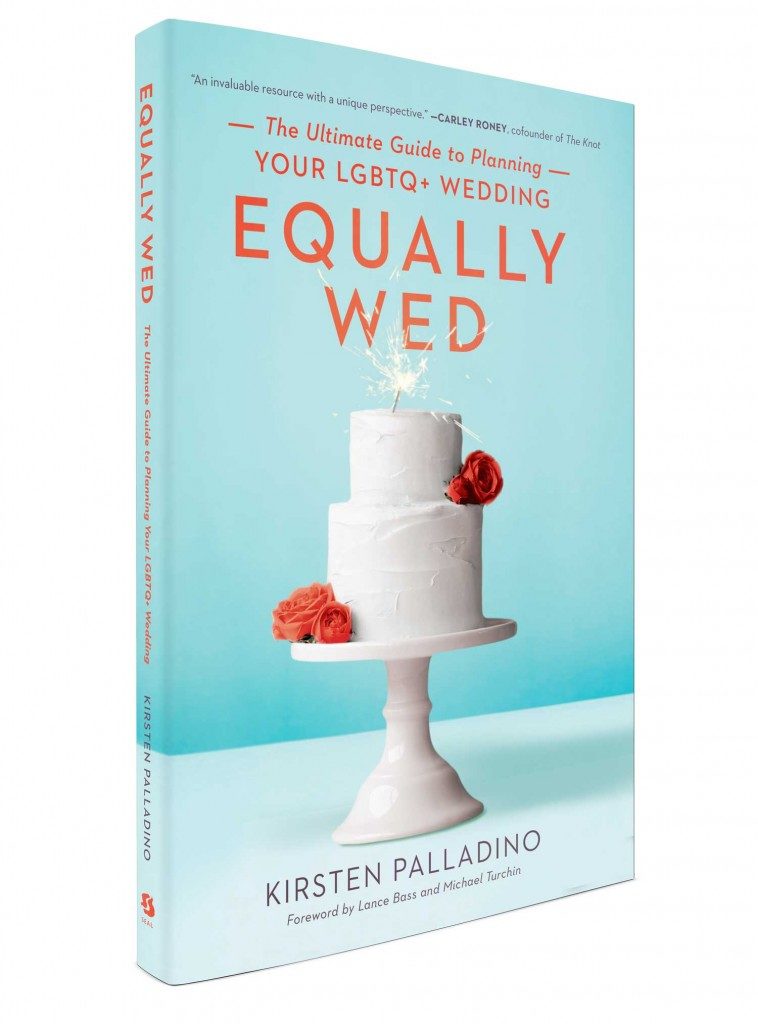Whether you use the term “marriage equality” or the more colloquial “gay marriage,” the fight for legal recognition for same-sex relationships has gained speed of late, with courts around the country overturning bans as unconstitutional. As of February 2, 2015, same-sex couples are able to legally marry in 35 states, as well as the District of Columbia. (Source: Freedom to Marry) The 35 states are Alaska, Arizona, California, Colorado, Connecticut, Delaware, Hawaii, Idaho, Iowa, Illinois, Indiana, Kansas, Maine, Maryland, Massachusetts, Minnesota, Montana, North Carolina, New Hampshire, New Jersey, New Mexico, Nevada, New York, Oklahoma, Oregon, Pennsylvania, Rhode Island, South Carolina, Utah, Virginia, Vermont, Washington, West Virginia, Wisconsin, and Wyoming. Additionally, same-sex couples also can marry in Florida (where a pro-marriage ruling is now on appeal before the 11th Circuit), as well as in some Missouri counties (based on pro-marriage rulings also now on appeal). In Missouri, the marriages of same-sex couples legally performed in other states are respected. On January 23, a federal judge struck down Alabama’s marriage ban, with a stay issued for 14 days, set to expire on Monday, February 9, 2015.
How did we come to this moment of historic change? While it is easy to point toward the activism of mainstream gay rights groups in the last few years, same-sex marriage has significant historical precedents that have shaped the long-term trajectory of the movement.

Jason and Jason’s wedding | Photo by Tara Beth Photography
“Surpassing the Love of Men:” The Importance of Romantic Friendships
The concept of romantic friendship originates from the passionate social relationships found most often between women that can be traced back at least as far as the Renaissance, particularly among the upper-class. Professor Lillian Faderman, scholar of lesbian history, offers the most complete history of romantic friendships among women, as well as their later incarnation as Boston Marriages, in her 1981 book Surpassing the Love of Men. In Surpassing the Love of Men, Faderman documents the practical effects of Platonism’s resurgence during the Renaissance, specifically that an emphasis on the importance of the soul over the body caused a shift in the moral understanding of same-sex relationships. As such, relationships that previously might have been confined to casual friendship were allowed to deepen emotionally for both women and men. Historically situated well before the conceptualization of homosexuality as we know it today, Renaissance era passionate friendships set the stage for the formally termed “romantic friendships” that followed, relationships that today find proponents on both sides of the argument regarding whether these friendships were sexual or not. I would, however, argue that there is adequate evidence to stake a claim for “romantic friendships” as predecessors to both contemporary lesbian relationships and gay marriage.
Unlike the Renaissance era passionate friendships, romantic friendships and later Boston Marriages were almost exclusively understood as between women, and they frequently included aspects of gender bending and cohabitation. In part, it was the fact that these relationships were between women that made them both visible and remarkable. While an unmarried man was still economically independent and could lead his life as he pleased, an unmarried woman was marked as a spinster, tending to remain in the family home. Thus, a man who preferred the company of other men might not be noticed, but women, such as the genteel British figure Anne Lister, whose preferences lay with other women, had to strike out a new path if they wished to pursue that preference.
We find in Anne Lister’s diaries the earliest recorded non-fiction account of what today would be recognizable as a lesbian relationship. As Lister wrote in 1821, “I love and only love the fairer sex and thus, beloved by them in turn, my heart revolts from any other love than theirs” – and Lister pursued and found other women who shared in this inclination. Lister was known locally for her tendency towards wearing masculine garb, and the early date of her diaries is significant because it predates the idea of Boston Marriages – relationships between two women who specifically lived together independently of men and were romantically and likely sexually involved, the term for which did not arise until the later 19th century and was centrally linked to women’s lives in New England. Lister’s diaries have been recognized by the United Nations as historically critical texts and in 2010 the author Emma Donoghue referred to the diaries as “the Lister diaries are the Dead Sea Scrolls of lesbian history. They change everything.”
A New Common Law: Boston Marriages
Boston marriages followed logically from romantic friendships, naming independent relationships between two women in the 19th and early 20th centuries. Women who participated in Boston marriages, were, like their predecessors, more likely to be wealthy and well educated, thus allowing them to shun the financial support of men, and many of these women found in their partnerships the support to pursue their careers. These women’s relationships share some of the same mystique of the romantic friendship, in that it is difficult to determine the romantic or sexual status of the relationships, but the origins of the term – which was coined in reference to Henry James’ novel The Bostonians – have been read to suggest that “the quiet acceptance of discreet homosexuality is a uniquely American act.” Henry James may have been a man, but he knew what he spoke of when it came to Boston marriages, as his sister Alice’s relationship with Katherine Loring seems to have served as the central inspiration for his novel. James described the relationship between the two as “A devotion so perfect and generous … was a gift so rare … that to brush it aside would be almost an act of impiety.”
Though Henry James’ clearly held a proper reverence for his sister’s relationship with Katherine Loring, many Boston marriages are indeed brushed aside in our accounts of history. Another famous woman whose intimate same-sex relationship is often forgotten by history is that of Jane Addams, the Hull House founder and Nobel Peace Prize winner. Addams lived in close communion with the heiress Mary Rozet Smith for more than 30 years, and while Addams is part of most standard history curricula, her long-term relationship is not typically included. The same is true of the well known feminist Susan B. Anthony, whose life story contains two major relationships with women, first Anna Dickinson and later Emily Gross. The companionship of other women played a fundamental role in the lives of many successful women in history, but the Boston marriage itself, and the role of the Boston marriage as an early model for same-sex marriage today, is generally left out of the story.
The Argument from Respectability: The Mattachine Society and the Daughters of Bilitis
Pre-Stonewall, but in the years after the Boston marriage had faded out as a phenomenon, the United States saw the rise of two distinct and groundbreaking gay rights organizations formed. Known at the time as homophile organizations, the Mattachine Society (formed 1950), a gay men’s group, and the Daughters of Bilitis (formed 1955), a lesbian organization, these groups did not explicitly advocate for marriage equality, but in their fight for civil equality in other arenas, both groups worked from what could be called the argument from respectability. The argument from respectability essentially states that gays and lesbians should be viewed as equal under the law, in employment, and throughout society because they are just like straight individuals. For example, the Mattachine Society and the Daughters of Bilitis held the first lesbian and gay protest for equal rights in front of the White House in 1965, focusing primarily on the right to equal employment. One requirement for participating in the protest was to dress respectably, or as organizer Frank Kameny put it, “If you’re asking for equal employment rights, look employable!”
Though the call sounds somewhat different today, Kameny’s words echo from the past in today’s fight for marriage equality. If you want marriage equality, behave in a marriageable manner! The argument from respectability is today a point of contention between progressive gay activists fighting for marriage and radical queer communities that privilege other political aims. While pro-marriage equality activists seem to have taken a page from the 1965 playbook, queers who view marriage as a dangerous form of assimilation are prepared to draw stark lines of distinction between gays and lesbians and straight individuals.
Jo Becker’s Forcing the Spring and Today’s Real Players in Marriage Politics
Shortly after that first protest in 1965, gay and lesbian politics entered what most people today think of as its modern incarnation, understood to be spurred by the 1969 Stonewall Riots. We’ve seen the first major out political figures, the removal of homosexuality from the Diagnostic and Statistical Manual in 1973, and the overturning of sodomy laws, first individually and then in one fell swoop through Lawrence v. Texas in 2003. With these accomplishments in place, marriage equality has become perhaps the central concern of contemporary gay and lesbian politics, and progress has been so rapid as to become difficult to keep an accounting of. As such, when someone claims to write a history of the movement’s progress, people pay attention. The recent example of Jo Becker’s book Forcing the Spring is prime example, however, of history being left behind.
Published in mid-April 2014, Becker’s book has garnered significant criticism for its limited view of the marriage movement. Numerous news forums have taken on Forcing the Spring, noting its focus on board rooms and court rooms rather than grassroots activism, as well as its emphasis on the little known American Foundation for Equal Rights (AFER). By focusing on small political evolutions on the part of specific lawyers and the narrowest understanding of the Prop 8 case coming out of California, Becker’s book forgets both the recent and distant pasts that informed the nationwide outrage surrounding the repeal of Prop 8, among other recent landmarks that have pointed the United States toward marriage equality.
Today, the real story is not about AFER, about the Prop 8 lawyers, or even the machinations taking place in Human Rights Campaign (HRC) board rooms or the hard work done by Freedom to Marry (though we’re thankful for all of this). It is about Phyllis Lyon and her late partner Del Martin, founders of the Daughters of Bilitis and the first couple licensed for marriage in California before marriage equality was overturned. It is about the canvassers across the country who have been reaching out to communities and changing minds through interaction. It is about young people like Matt Palazzo, a founder of the Equal Roots Coalition. It is about Wayne Steinman and Sal Iacullo, the first gay couple to have their marriage announced in my hometown newspaper, the Staten Island Advance. You won’t find these individuals among the major players in Jo Becker’s book, and this is where she gets the story wrong.
Marriage equality today is about the hard work and dedication of individuals like these, to their relationships, their integrity, and their history. Marriage equality is part of a vision for the future, but it is a vision that has a long and storied past, shining forth from histories of romantic friendships, Boston marriages, homophile activism, and more. To move forward with real integrity, we need to honor that past.
 Bird Pilatsky is a doctoral fellow in women’s, gender and sexuality studies at Emory University and an alumna of Smith College. Her writing has been featured in Broad Magazine, at xoJane and Stir Journal, and on The Rose and Chestnut. For more, visit her blog.
Bird Pilatsky is a doctoral fellow in women’s, gender and sexuality studies at Emory University and an alumna of Smith College. Her writing has been featured in Broad Magazine, at xoJane and Stir Journal, and on The Rose and Chestnut. For more, visit her blog.
Editor’s note: This article was originally written in September 2014, and last edited by Kirsten Ott Palladino on February 2, 2015.





















